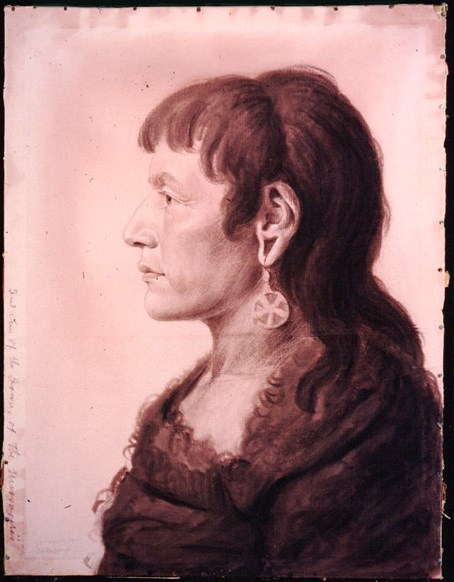Last updated: September 13, 2021
Article
Shehek-Shote Portrait

New-York Historical Society Museum
Sheheke responded to Lewis and Clark’s gifts and attentions by welcoming the Corps of Discovery to the land of the Mandan. The warmth of his hospitality was made clear to the Captains during that famously cold winter, telling the Americans: “If we eat, you shall eat; if we starve, you must starve also.”
When the Corps returned from the Pacific, Sheheke traveled back east to St. Louis, then on to Washington City, where he met President Jefferson. While in Philadelphia in 1807, the French artist Charles B.J.F. de Saint-Mémin painted a portrait of the chief and a separate painting of his wife Yellow Corn. The image shown is one of two possible de Saint-Mémin works that could be Sheheke. Both are very similar, but clearly different men.
This work is currently in the collection of the New-York Historical Society Museum. It was created using black and white chalk on paper, with a gilded wood frame and glass with black paint and gold leaf.
